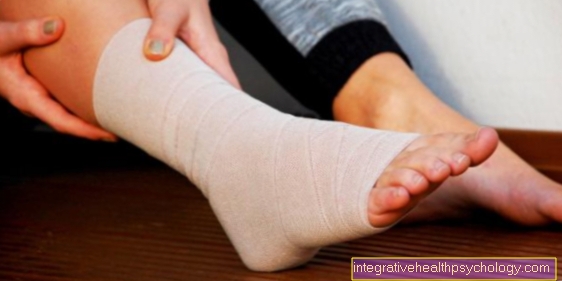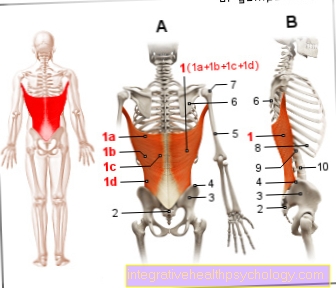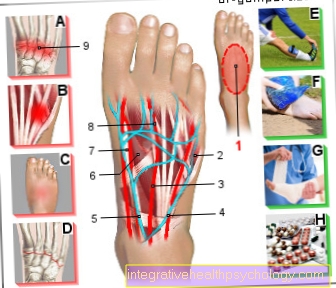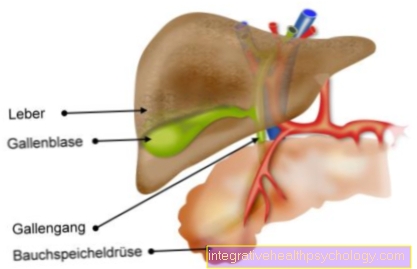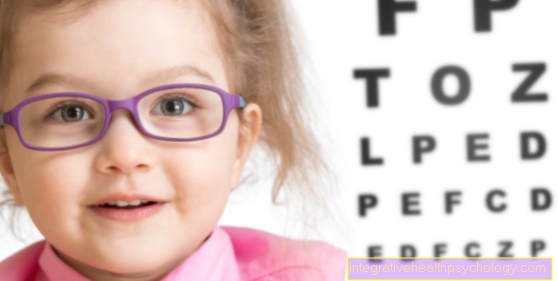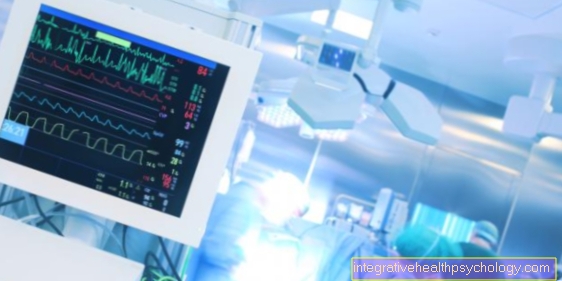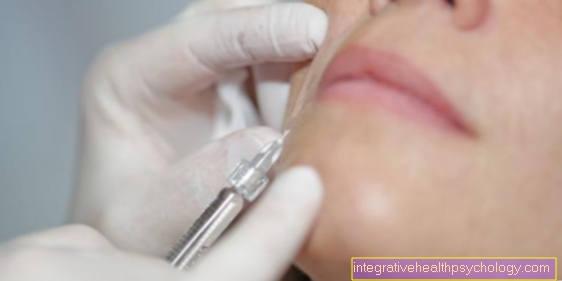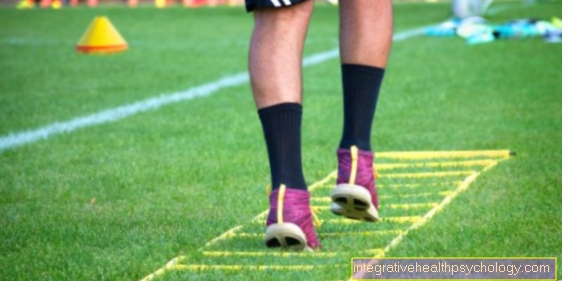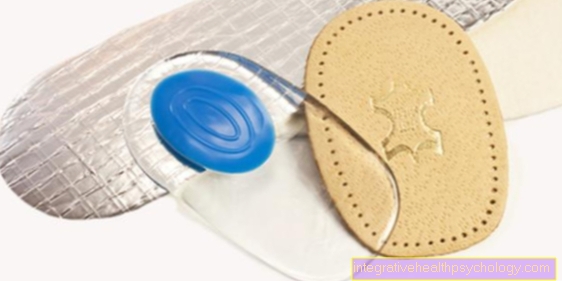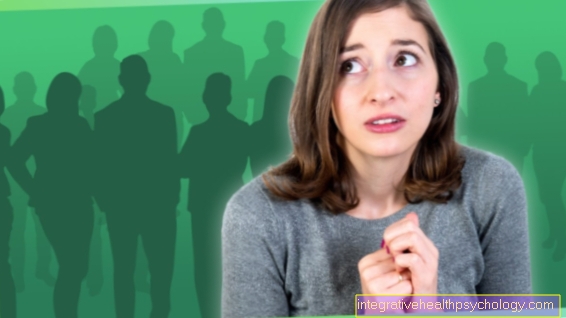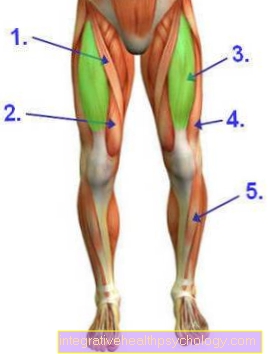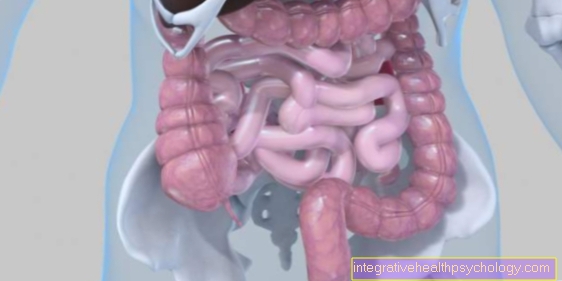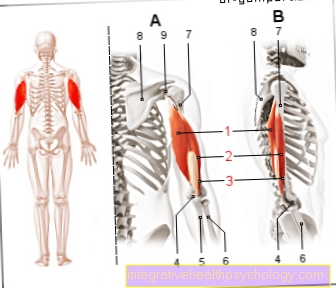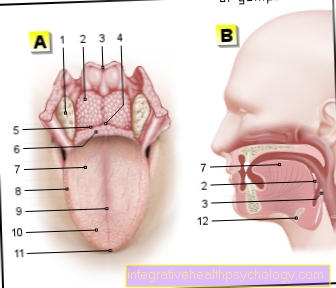Squinting in children
General
Squinting as a visual disorder occurs very often in children. One eye (or both) deviates from the parallel position so that both eyes do not look in the same direction. The cross-eyed eye can deviate from the "normal position" in all four directions:
- downward,
- up,
- outwards or inwards.
Even small children can be affected by this visual disorder, but later development towards strabismus is also possible. About 5-7 out of 100 people in Germany are affected by the disease.

Forms of squint and causes
Squinting in children can have various causes, but mostly a family disposition plays a role. A squint is also possible due to the different strength of pulling eye muscles. Sometimes there is also a visual impairment in one eye.
The so-called accompanying strabismus is widespread. The cross-eyed eye follows the movements of the healthy eye and thus accompanies the healthy eye. This form of squint occurs especially in children up to the age of 4 and the cause for it usually remains unexplained. Far-sightedness and varying degrees of refractive power in the eyes are, however, made responsible for the accompanying strabismus.
The paralysis squint is caused by paralysis of one or more eye muscles and it is not possible to look in certain directions. This form of squint is possible at any age and there are many known causes, such as injuries to the eye muscles or circulatory disorders.
There is also the latent squint. This is caused by an imbalance in the eye muscles.
Usually the imbalance can be corrected and the children are not affected by the squint. However, if those affected are very tired, for example, the imbalance of the eye muscles can no longer be compensated and squint occurs.
Read more on the topic: What are the causes of strabismus?
Squinting inward
Inward squint is much more common in children than outward squint.
An object that one would like to see from a distance is usually fixed with both eyes in a parallel line of sight. If one eye deviates inwards towards the nose during fixation, then it is a so-called internal squint. The most common form of inward squint is early childhood squint syndrome. It is already present at birth and is diagnosed in the first 6 months of life. Often the head is tilted towards the leading eye and a large, alternating squint angle is observed.
Squinting outwards
The outward squint is significantly less common than the inward squint and occurs more often in adults than in children. The most common form is the intermittent outward squint. The axes of the eyes only deviate outward in the distance. When looking at objects that are nearby, you have normal vision. In mild cases it occurs only periodically and can be aggravated by tiredness or psychological stress.
Why do children only cross-eyed sometimes?
In order for children to be able to perceive things and objects correctly in three dimensions, both eyes must be directed parallel to the same object. An image can then be generated in both eyes, which is slightly different from that of the other. This slight deviation is then processed further in the brain into a single visual impression.
When a child squint, the visual axis of the affected eye deviates from the object to be fixed at times or always, so that the information that is passed from this eye to the brain is too different to the other eye. The impressions cannot be processed.
In children, the image perception of the cross-eyed eye is suppressed and the eye's weak eyesight often develop unnoticed. It is important to distinguish a manifest from a latent strabismus. In manifest strabismus, the affected eye constantly deviates from the common line of sight. In most cases, the cause is congenital visual disturbances or newly occurring paralysis of the eye muscles.
Latent squint is more common in children. The cross-eyed eye deviates from the common line of sight only temporarily. The causal disorder lies in an imbalance in the eye muscles, which can be compensated for at times.
In the affected children, the squint is only sometimes noticed and it remains hidden. As a result, there is a risk that the squint is often only noticed very late when the affected eye is already weak. The latent squint is often aggravated by stress, difficulty concentrating or increased fatigue.
Symptoms
That is typical for squinting unusual direction of viewwhich is often already noticed by parents. Most of time pinch squinting children or even covering one eye with one hand Double vision to minimize.
When the kid keeps head back aslant holds, reacts irritably or yourself clumsy moves, this can also indicate a squint, since the squint the three-dimensional Child's perception severely impaired. This is because both eyes are in the same direction have to look so that the surroundings can be recognized as space. The two images that the right and left eyes see become one in the brain Overall picture put together. In the case of a cross-eyed person, these two images deviate from each other so much that they no longer fit together and the brain cannot bring them together into a single image. Instead, the child sees Double vision. If this condition lasts longer, the brain “switches off” the visual impressions of the cross-eyed eye and the child then only sees with that healthy Eye, but still not in 3D.
Squinting when you're tired - what's behind it?
In temporary squint, latent squint, it occurs due to an imbalance in the muscles of the eye.
In most cases, the child's brain can compensate for this disturbance so that the child does not perceive any complaints. If children suffer from severe fatigue, the already existing imbalance of the eye muscles will continue to increase. Due to the additional stress, at some point the brain is no longer able to reconcile these different impressions. The visual impressions gained from both eyes cannot be processed together and cannot merge. In these cases, blurry images and headaches arise as a result. The squint is also intensified and makes it even more difficult to see.
In many cases, a latent squint in small children is often only recognized in phases with a lot of stress and increased fatigue. Other factors that can be associated with an increase in strabismus are poor concentration, overexertion or psychological stress.
diagnosis
When a child strong squints, that's how she falls unusual direction of view usually to the parents and an examination of the child by the ophthalmologist is necessary.
With a lamp the doctor shines into the child's eye during the eye examination. This tests whether the light in both eyes is from the same place on the pupil reflected back becomes. If the child is older, the examination includes more. For example, the child is asked to fix objects with their eyes, sometimes covering one eye. Even a slight squint can be done with the results of a thorough eye examination determine.
Therapy: the earlier, the better
The sooner the squint therapy is started, the better it is for the child's development. The development of vision can still be influenced up to the age of about three, as the brain is not yet fully developed by that time.
First, the doctor determines what type of squint is present in the individual case. The visual defect can often be corrected with glasses. During the course of treatment, the strength of the glasses should be checked again and again, as it is possible that it will change, either positively or negatively, as the child grows.
It is usually necessary to train the eye that has been weakened by squinting so that it is not switched off by the brain. In order to particularly challenge and encourage the weak eye, the healthy eye is masked at regular intervals. This form of treatment requires a great deal of discipline and patience from both the parents and the child, but it produces very good results.
In some cases, the child's strabismus can only be treated with surgery (surgery for strabismus). The doctor surgically opens the conjunctiva to adjust the eye muscles. In most cases, the conjunctiva heals completely without complications. However, three-dimensional vision is often not possible even after an operation.
Read more on the topic: How can you treat strabismus?
How can glasses help?
In most children, the squint is triggered by a long-standing ametropia.
Therefore, the ophthalmologist can first measure the severity of the visual defect in the affected children. When determining this ametropia (refraction determination), the deviation of the measured refractive power from the ideal value is determined. This deviation is known as the refractive error and is expressed in diopters. The diopters are a measure of the current strength of a farsightedness (plus dioptre), a myopia (minus dioptre) or a curvature of the cornea.
To compensate for this ametropia in cross-eyed children, glasses or contact lenses are made. They can be adapted directly to the measured values and thereby compensate for the deviations in the refractive power. Regular wearing of the glasses enables correct vision that is relaxed for the eyes. Over time, the decrease in tension reduces the squint angle or it even recedes completely.
If the difference in the refractive power of the healthy and the cross-eyed eye is too great, one can also consider covering the healthy eye and the cross-eyed eye with a plaster bandage at alternating intervals. If the healthy eye is covered, the weaker eye should be trained and the ametropia should be compensated. However, so that the healthy eye does not lose sight, the cover must be changed regularly.
Can osteopathic treatment help with squint?
The use of osteopathy represents an expanded option within the therapeutic treatment of childhood strabismus.
It is believed that the squint can be aggravated by tiredness, tension, stress or psychological tension.
In the teaching of osteopathy, the ametropia is often seen in connection with existing blockages in the body. Stress, fear and bad experiences are anchored in the muscles of the child's body. In cross-eyed children, the muscles on the side the child is squinting to are more tense than on the other side.
The cause for this can be, for example, a displacement of the skull bones or an injury during childbirth. Through targeted massages, loosening and relaxation exercises, the muscle blockages can be loosened and the ametropia can be improved.
forecast
If the squint is not treated in a timely manner, it can potentially last a lifetime no longer corrected become. The child does not learn to see with both eyes and so can not see spatially. They often occur as a result of squinting a headache because the brain is overwhelmed with the constant comparison of two incongruent images that are passed through the eyes into the brain.
Despite treatment, the strabismus can partially not fully resolved and the affected children have to expect limitations in later life. A job or a sport that spatial vision will require them impossible be.
prevention
Of the Pediatrician should check the small child regularly for strabismus in the first six months of life. Especially when other family members already have visual defects Checkups important. Children do not notice their own visual impairment and learn to accept it as a normal condition, which is why the squint absolutely within the first two to three years of life must be recognized and treated.



